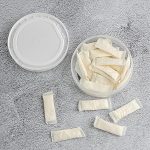How Can I Prepare for Biomolecules for the NEET?
A biomolecule, also known as a biological molecule, is any of the many compounds created by cells and living creatures. Carbohydrates, lipids, nucleic acids, and proteins are the four primary categories of biomolecules.
Biomolecules
Nucleic acids, particularly DNA and RNA, are macromolecules that have the unique role of storing an organism’s genetic code—the sequence of nucleotides that determines the amino acid sequence of proteins, which are fundamental to life on Earth. A protein can include up to 20 distinct amino acids, and the sequence in which they appear is crucial in defining the structure and function of the protein. Proteins are important structural components of cells. They also operate as transporters, transporting nutrients and other chemicals into and out of cells, as well as enzymes and catalysts again for overwhelming bulk of chemical events in living organisms.
Carbohydrates, that are primarily made up of components having carbon, hydrogen, and oxygen atoms, are also vital energy sources and structural components of all life on Earth, and they are among the most numerous biomolecules. Monosaccharides, oligosaccharides, disaccharides, & polysaccharides are the four types of sugar units used to construct them. Lipids, another important biomolecule in living organisms, provide a range of functions, including storing energy and functioning as chemical messengers. In higher (more sophisticated) species, they also create membranes that separate cells from their surroundings and compartmentalise the cell interior, giving birth to organelles like the nucleus and mitochondrion.
A basic link between structure and function exists in all biomolecules, which is modified by factors such as weather in which the biomolecule is found. Lipids, for instance, are hydrophobic (“water-averse”), and many of them spontaneously organise themselves in water so that the hydrophobic ends of the molecules are shielded from the water whereas the hydrophilic ends are accessible. Lipid bilayers, essentially two layers containing phospholipid molecules, create the membranes of cellular components as a result of this configuration. Another instance is DNA, which has a highly flexible helical structure that allows it to become tightly coiled and looped. Regarding humans, the total length of all the DNA molecules in an individual cells would just be roughly 1.8 metres (6 feet) if extended start to finish, while the cell nucleus is around 6 metres (6 10-6 metres) on size.This structural characteristic is critical for DNA to fit into the cell nucleus, where it performs its job of coding genetic features.
Carbohydrate
Carbohydrates are a group of naturally occurring chemicals and their derivatives. Organic molecules with similar formulas were discovered to have a similar ratio of hydrogen to oxygen. Many carbohydrates are represented by the generic formula Cx(H2O)y, which stands for “watered carbon.” Carbohydrates are the most common and widely distributed organic compounds in nature, and they constitute an important component of all living organisms. Carbohydrates are created by green plants during the photosynthesis process from carbon dioxide and water. Carbohydrates are energy sources & building elements in organisms; carbohydrate also makes up part of the structure of nucleic acids, which store genetic information.
Lipid
lipids are a complex category of chemical molecules that include fats, oils, hormones, and some membrane components that are grouped together as they have little interaction with water. Triglycerides are a form of lipid that is stored as fat in adipose cells, which serve as a power storage store for organisms as well as providing thermal insulation. Certain lipids, including such steroid hormones, produce chemicals transmitters between cells, tissues, & organs, while others transmit information between biochemical processes inside a single cell. Cell walls and organelles (cell structures) comprise of microscopically thin structures made up of two layers of phospholipid molecules. Membranes serve to keep individual cells apart from their surroundings and to compartmentalise the cell interior into structures that perform specific activities. Membranes, and the lipids that make them up, are so vital for compartmentalization that they must have been necessary for the genesis of life.
Do you know the answer of the question:In B-DNA, the rise per base pair would be?
Nucleic Acid
Nucleic acid is a chemical substance found in nature that can be reduced down into simple sugars, an organic base combination, as well as phosphoric acid. Nucleic acids are the cell’s principal knowledge molecules, and they define every living thing’s inherited feature by controlling the process of protein synthesis. The two major forms of nucleic acids are ribonucleic acid (RNA) and deoxyribonucleic acid (DNA). The genetic material in all free-living creatures and most viruses is made up of DNA, which is the master blueprint for life. RNA is really the hereditary information of particular viruses, but it can also be present in all living cells, in which it plays a key part in processes like protein synthesis.

















